Dunes at Popham Beach in Phippsburg (2006)
| Year | Population |
|---|---|
| 1970 | 1,229 |
| 1980 | 1,527 |
| 1990 | 1,815 |
| 2000 | 2,106 |
| 2010 | 2,216 |
| Geographic Data | |
|---|---|
| N. Latitude | 43:46:44 |
| W. Longitude | 69:49:41 |
| Maine House | District 53 |
| Maine Senate | District 23 |
| Congress | District 1 |
| Area sq. mi. | (total) 43.9 |
| Area sq. mi. | (land) 28.9 |
| Population/sq.mi. | (land) 76.7 |
| County: Sagadahoc | |
[FIPS-burg] is a town in Sagadahoc County, incorporated on January 26, 1814 from a portion of Georgetown.
The mouth of the Kennebec River is the site of the first English attempt at settling New England: the Popham Colony of 1607-1608.
First settled in 1659 by John Parker II, who bought most of the town from the Indians, Phippsburg was depopulated by the end of the century as a result of the early colonial wars.
It was named in honor of Sir William Phipps, governor of Massachusetts in the late 17th century, who was born in nearby Woolwich.
Even before incorporation, the community had its Congregational Church organized in 1765 and built in 1802. Located just off Maine Route 209, it overlooks an inlet of the Kennebec River.
The construction of school buildings in Phippsburg began in the 1820s, and by 1835 there were nine schools.
Further subdivision of the town into local school districts continued at least into the 1860s when an additional six had been added. (See the Percy District School below.)
Phippsburg Elementary School on the Main Road is the sole remaining public school.
In 1891 Phippsburg ceded Ragged Island to Harpswell, but in 1917 it added substantially to its roster of islands, annexing nine in Casco Bay:
Bushy, Hen, Bear, Malaga, Burnt Coat, Black Snake, Wood, Little Wood, and Gooseberry Islands. Malaga was later offered to, but refused by, Harpswell.
Popham Beach State Park offers a long beach with views of Seguin Island and its lighthouse.
Fort Popham and Fort Baldwin, rise as a guardians of land upriver. Coxes Head, which juts out into the Kennebec River, was also fortified with earthworks in 1814 during the War of 1812.
Near Popham Beach in 2001 a stand of tall, attractive vegetation was flourishing: Common Reeds or Phragmites. As interesting as they seem, they are an invasive species that crowd out local vegetation and degrade habitat for native creatures.
The Bates-Morse Mountain Conservation Area is accessible from a private road off Route 209 which leads about 2 miles over a salt marsh and wooded hill to a sandy beach between two rivers. Popham Beach State Park is a favorite destination of Maine residents as well as tourists.
The Kennebec River dominates the long east side of town from Fiddlers Reach near Bath to Popham Beach. A boat launch, with information about nesting birds and environmental protection, is available at Morse Cove just south of the Reach.
Sabino Head on the lower Kennebec near Popham Beach, hosts a memorial to the small sailing vessel Virginia. It was built here in 1607-1608 at the Popham Colony, Fort St. George.
Phippsburg Historical Society and Museum occupies the former Phippsburg Center Schoolhouse, which is adjacent to the Totman Library on the Parker Head Road.
Form of Government: Town Meeting-Select Board-Manager.
Additional resources
The 1881 Town Hall Phippsburg, Maine: A History. Phippsburg, Me. Phippsburg Historical Society Inc. 1989. [University of Maine. Raymond H. Fogler Library. Special Collections]
Ballard, Edward. Augusta at Small Point Harbor. Northern Monthly. 1864. (Cataloger Note: Extract from: The Northern Monthly, vol. 1, Sept. 1864. “Augusta, Ancient. A village at Small Point Harbor established about 1716 and abandoned within a few years”–Attwood’s Length and Breadth of Maine, p.99.)
Gilman, Stanwood C. Phippsburg on the Kennebec, 1607-1964. Phippsburg, Me. The Author. c1964.
Gilman, Stanwood C. Small Point, “The Cape of many islands,” 1667-1965. c1965. (Brunswick, Me. Brunswick Printing Co.)
*Maine. Historic Preservation Commission. Augusta, Me. Text and photo from National Register of Historic Places: http://pdfhost.focus.nps.gov/docs/nrhp/text/xxxxxxxx.PDF, http://pdfhost.focus.nps.gov/docs/nrhp/photos/xxxxxxxx.PDF
Perkins, James E. One Man’s World Popham Beach, Maine. Freeport, Me. Bond Wheelwright Co. 1974.[University of Maine. Raymond H. Fogler Library. Special Collections]
Phippsburg. Charleston, S.C. Arcadia Publishing. c1999.
Phippsburg Historical Society. Phippsburg, Fair to the Wind. Lewiston, Me. Twin City Printing. 1965.
Sewall, Emma D. The Rivers and Marshes of Small Point. 1941? (Bath, Me. The Times Company) [University of Maine. Raymond H. Fogler Library. Special Collections]
Stories of Phippsburg, Maine from the Files of the Phippsburg Historical Society. Phippsburg, Me. The Society. c1993-c2003. [University of Maine. Raymond H. Fogler Library. Special Collections]
National Register of Historic Places – Listings
Photos, and edited text are from nominations to the National Register of Historic Places researched by Maine. Historic Preservation Commission.
Full text and photos are at https://npgallery.nps.gov/nrhp
Cold Spring Farm
[off Fiddler’s Reach Road] This fine Georgian house, located on the side of a bluff facing the lower reaches of the Kennebec River, was built by William Lee, an emigrant from England to Boston, who left that city because of the civil disturbances which culminated in the “Boston Tea Party.” Lee was a brick and chimney pot maker.
Cold Spring Farm was built of brick made from clay in the bank of the stream running into the river north of the house. The house remained in the Lee family until 1895, having numerous owners since. It was beautifully and correctly restored by the owners in the 1980s. A plentiful spring that does not freeze even in the coldest winter months is within a few yards of the west side of the house.*
Fort Baldwin Historic Site
[Sabino Hill] Named in honor of Col. Jeduthan Baldwin, an engineer in the Continental Army during the American Revolution, Fort Baldwin was the last in a long series of fortifications designed and built to defend the mouth of the Kennebec River. The river’s importance was recognized from the period of exploration and settlement when Fort St. George was built to defend the Popham Colony of 1607.
Sea-born threats, real or imagined, to the security of the vital Kennebec, with its industry and the State Capitol to the north, led to the construction of Fort Baldwin on Sabino Hill in the period between the Spanish-American War and World War I. During the Great War two companies of artillery were stationed at the fort. By 1924 the fort, now unnecessary, was sold to the State of Maine. A World War II fire control tower was built on the site, an early-warning device for the defenses of Portland Harbor. Fort Baldwin’s significance lies not in its history, not having fired a shot in anger, but in its fortifications, the best preserved of their period in Maine.* [More at Fort Baldwin.]
Fort Popham Memorial
[North of Popham on Hunnewell Point Popham Beach] Like other Civil War forts, Fort Popham, begun in 1861, was outmoded before completion. The fort was garrisoned in 1865-66, during the Spanish American War in 1898, and during World War I. The armament and strength of the fort were such that it would have been practically impossible for warships of the Civil War period to have passed. A serious attempt pass the river entrance would have involved a landing and an attack from the rear, hence the moat and the small guns and loopholes that command beach.
In 1898 a battery with one eight inch converted gun was built for use in the Spanish-American War. Mine equipment was installed at the start of World War I to protect the channel leading to Bath. After the war it was removed. This was the last improvement made by the United States at Fort Popham.* [See more at Fort Popham.]
Ingraham, Charles H., Cottage
[off Maine Route 209 Phippsburg] This 1897 structure, designed by Howard K. Hilton, is the finest shingle style house on the Phippsburg peninsula. However, it is more well known for its stone exterior and by the name “Stone House.” It is an extremely fine and unusual building whose entry hall and staircase rival similar designs by architect H. H. Richardson, on which they were modeled. Included in the property are a carriage house and a pump house.
Charles H. Ingraham, a retired Providence, Rhode Island banker, had long summered in the area. He built the house as a year-round retirement home, hoping, to no avail, that some of his friends would join him in building homes or cottages near Popham Beach. In the mid-1920s, Ingraham reportedly became impoverished and spent the last years of his life alone in the house, living largely in the kitchen.*
In 2015 it was a bed and breakfast known as Stone House Manor.
Manley, Joseph and Susan, Summer Cottage
[east side of Club Road, 0.1 mile South of junction of Maine Route 216 and Club Road Small Point] Built in 1888 from plans by Lewiston architect George M. Coombs, the Joseph and Susan Manley Summer Cottage is a large Queen Anne style frame building. It is one of several cottages in a small summer colony at Small Point. Manley (1842-1905) was born in Bangor. Within a few years, Manley’s family moved to Augusta where he lived for most of his career. In 1866 he married Susan Cony (1839-1895), daughter of Governor Samuel Cony. Manley had a career as a politician, civil servant and businessman. At the age of nineteen he graduated from the Albany Law School. Returning the same year to Augusta, he formed a law partnership with H. W. True. In 1865 he was admitted to practice in the United States Circuit and District courts and was appointed a Commissioner of the United States District Court of Maine. From 1869 to 1876 he was as a Special Agent of the Internal Revenue Department. In 1878 he purchased a half interest in the Maine Farmer and controlled its editorial columns. In 1881, he was appointed Postmaster of Augusta by President Garfield.
The Manleys’ summer cottage was built the year that he was elected to his first term in the Maine Legislature. The choice of Small Point as their place of summer retreat was undoubtedly influenced by the fact that it was promoted and in part developed by Governor Joseph Bodwell.The Manley cottage, next to Bodwell’s, was probably completed in time for the 1888 summer season. This building is among the earliest and largest of the summer residences at Small Point.* [Kirk F. Mohney photos]
The exclusive nature of the “colony” in 2015 was emphasized by the large sign proclaiming “WARNING, Private Property, Permit required for entry of residents and tenants.”
McCobb-Hill-Minott House
[Parker Head Road] The 1774 Georgian style McCobb-Hill-Minott House is an early coastal residence representing the wealth and stability achieved by a few in the second half of the 18th century. It was intimately connected with the industrial, commercial and political history of Phippsburg for almost 150 years.
James McCobb of Londonderry, Ireland arrived in 1731. Prospering in both lumber and commerce, McCobb acquired vast tracts of land including his “Homestead Farm” of more than a 1000 Acres. Here he built the fine foursquare home for the second of his three wives. He played a major role in town affairs, heading the local Committee of Safety during the Revolution. McCobb died in 1788.
His third wife brought her son Mark Langdon Hill to Phippsburg. Mark Hill became one of the community’s early major shipbuilders, partnering with Thomas McCobb, son of James McCobb, in 1796. [See Thomas McCobb’s Spite House now in Rockport.] The Hill-McCobb firm launched eight major vessels for the West Indies trade. Hill was the first postmaster in 1801, a Judge of Common Pleas in 1810 and Chief Justice, Court of Sessions, in 1811. In 1818 he served on a Commission to settle land disputes with the Penobscot Indians. Between 1819 and 1823 Hill was a member of the U.S. House of Representatives, one of Maine’s first Congressman at statehood in 1820. He died in 1842.
Charles V. Minott, Sr. of Bowdoinham bought the house in 1853. In 1845 he had begun a career as a shipbuilder. He opened his own yard in Phippsburg Center in 1853, becoming one of the most successful builders in the region, launching 34 major vessels. The yard was operated by his son until the last vessel was sold in 1917. The House was still owned by the granddaughter of Charles V. Minott, Sr. in 1977.*
Percy District School House
[(Former), Junction of Parker Head Road and Cox Head Road Parker Head] Completed in 1838, the former Percy District School House is a traditional one-room school distinguished by its granite block construction. It is one of three such buildings erected in the vicinity during the 1820s and 1830s.
In 1944, nearly twenty years after it closed, the former school was remodeled into a residence at which time an addition was made to the rear. Even so, the former school is important for its architectural significance.
In both its general design and the materials used in its construction, the Percy District School is representative of a local school building tradition, reflected in two other buildings within four miles of each other. The earliest of these may be the Old Stone Schoolhouse in Georgetown which is believed to have been built around 1820. Both the Old Schoolhouse in York, said to have been built in 1746, and the Brick School in Winslow, built in 1810, are similar.
Although local historians indicate that the school was built in 1836, it is apparent that a substantial amount of work was still underway in 1838.*
In 2015 it was a private residence.
Popham Colony Site
[Address Restricted Popham Beach]
Ropes End
[36 Hyde Road] Built about 1898, the Ropes End Cottage (currently known as the Curtis Cottage) is a large Shingle Style frame building. It is one of a number of cottages in a small summer colony at Small Point. Its style is characteristic of turn of the 20th century summer homes in Maine. The history of Ropes End is linked to the emergence of the summer cottage colony at Small Point and reflects the culture of the newly rich from the Bath area.
Small Point is the most southerly part in Phippsburg on the Gulf of Maine. It is one of the earliest settlements on the northeast coast and supported a small but successful population of farmers, shipbuilders, and sea captains through the 17th to 19th centuries. One of the most successful sea-faring families in Phippsburg were the Lowells who built their homestead on the east side of Cape Small in 1829. By 1885 Captain Abner Lowell retired and sold his cottage and land to Joseph Robinson Bodwell, former Maine governor, and his partner Melville B. Spinney. They planned a small summer development.
One of the most spectacular parcels on the Maine Coast, most of the land had been cleared, some used to pasture sheep and cattle with sweeping views of the ocean. Probably Bodwell and Spinney saw a new Bar Harbor as they laid out a network of roads connecting dozens of cottage lots. The Club Road was built in 1884. The road to the beach (now Hyde Road) was already in existence.
A surge of tourism on the coast was in full swing. To accommodate, Spinney initially put an addition on his home (the 1829 Lowell cape) serving meals to tourists and offering seasonal accommodations. In 1885 the Bath Independent notified the community of the pleasant meals to be had at Spinneys.
Just prior to his death Spinney sold the property to his cousin Horace Rope’s wife, Corinna de L. Ropes, thus keeping it in the family for several more years. In 1935, it was sold to General Edward P. Curtis and his family. Other than modest changes the structure retains the stylistic features that invoke the leisure ethic of the turn of the 20th century in coastal Maine. Although not as large as many of its shingle style contemporaries in Bar Harbor, Islesboro or North Haven, Ropes End is an upper class summer cottage. The arrival and departure of the influential families were often noted in the paper. Unlike many of the other summer communities, the majority of the residents, including the Sewalls, hailed from the city of Bath, less than 15 miles north and thus created a fairly exclusive enclave for its power elite.* [Christi Mitchell photo]
Small Point Club
[Club Road, 0.3 miles South of junction of Maine Route 216 and Club Road Small Point] The 1896 Small Point Club is a three-story rectangular frame building built by a some residents of the Small Point summer colony. Designed by the Pittsburgh architect Joseph L. Neal, the club was built largely on the design with few modifications. The Small Point Club began in 1895 when the four founders (Joseph H. Manley, Harry H. Stinson, Joseph F. Bodwell, and Melvin S. Holway) formed an association for “mutual social intercourse.” Arthur Sewall of Bath, the great shipbuilder and a then recent candidate for the Vice Presidency of the United States, was a shareholder. He died at his cottage in Small Point September 5, 1900.
Small Point Club Interior (1998)Although threatened during World War II by a development plan that would have resulted in its demolition, the Club survived and continues as a social center, dining room, and lodging facility for members of the club and their guests. * [Kirk F. Mohney photo]
Wallace/Haskell Homestead (1906-1941)
The Wallace/Haskell homestead was the home of prominent American artist Ernest Haskell from 1906 to his death in 1925. Haskell began his career in New York as an illustrator, later studied in Paris, and finally worked in Maine during his mature period as an important American artist specializing in etching. Mr. Haskell created some of his best work at the homestead including many etchings focused on the local Maine landscape. After Earnest Haskell’s death his wife continued living on the property and ran the Haskell Camp in Maine for children from 1927 to 1938. The camp lodge and office were built in 1927 along with cabins that no longer exist.
The existing barn was used for crafts and the home was the director’s house. The camp was reopened as Camp Casco Bay for the summer of 1941 to British children living in foster homes on the eastern seaboard. The children were sent to the United States to escape the bombing of London and in many cases were housed separately from siblings also in the United States. The camp was not continued after the United States entry into World War II.



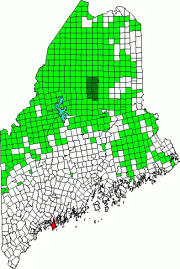

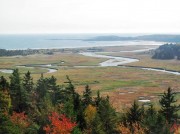
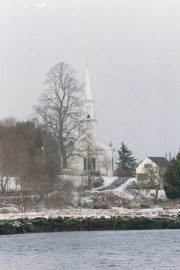
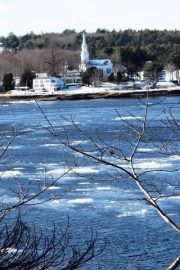


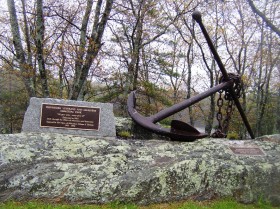
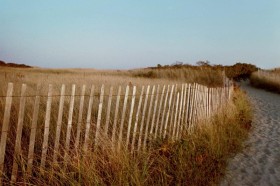
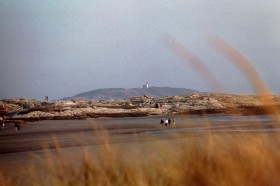

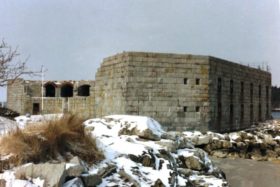
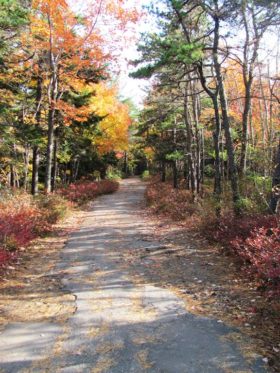
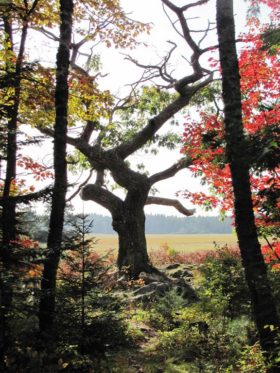

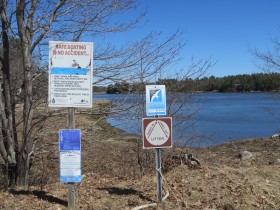
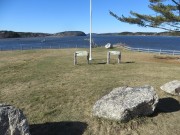
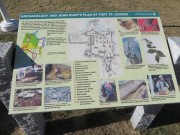
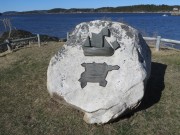
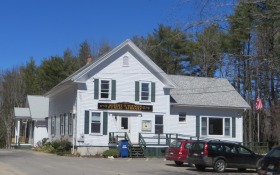
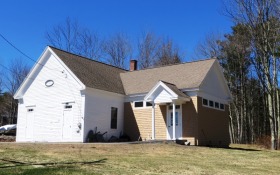

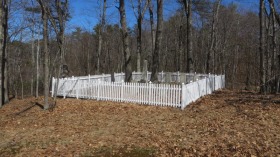
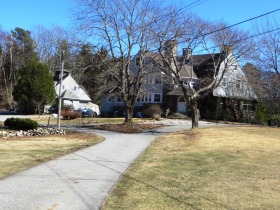
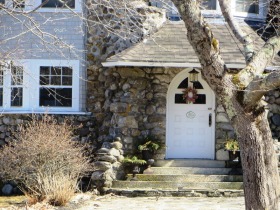
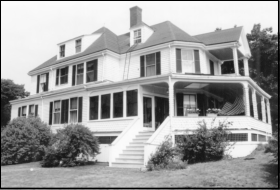
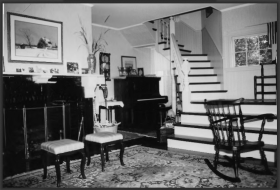
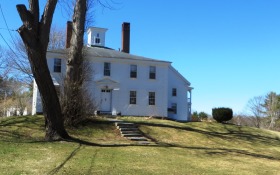
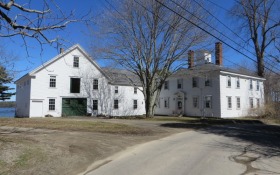
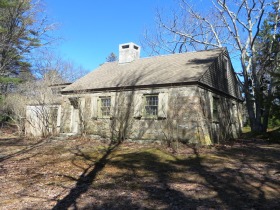
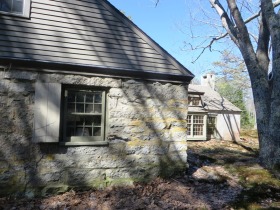
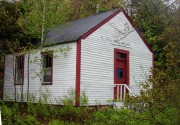
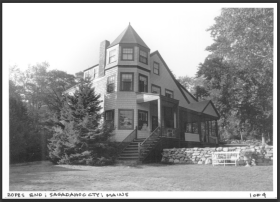

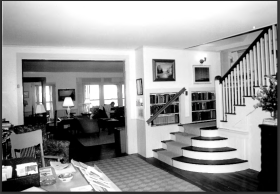
My Mother’s side of the family has been part of Phippsburg since its very beginning, and my brothers and their families still live in town. I was hoping this site might have some reference to the very active Phippsburg Historical Society, which might be a great adition to this site! Thanks
Thanks for your comment, suggestion, and giving a hearty reference to the Phippsburg Society.
Maine local historical societies and other small community organizations are prone to change their website addresses, act as a committee of their towns or libraries, or break from the town/library to form a new entity. Frequently there are several “historical” organizations in the same town.
The Encyclopedia offers a list of local historical societies at https://maineanencyclopedia.com/cultural-resources/. This single list is relatively easy to update rather than having references in each town article. (Phippsburg HS in on the list and the link is up-to-date.) A web search of “XTOWN Historical Society” will often provide folks with a range of resources.